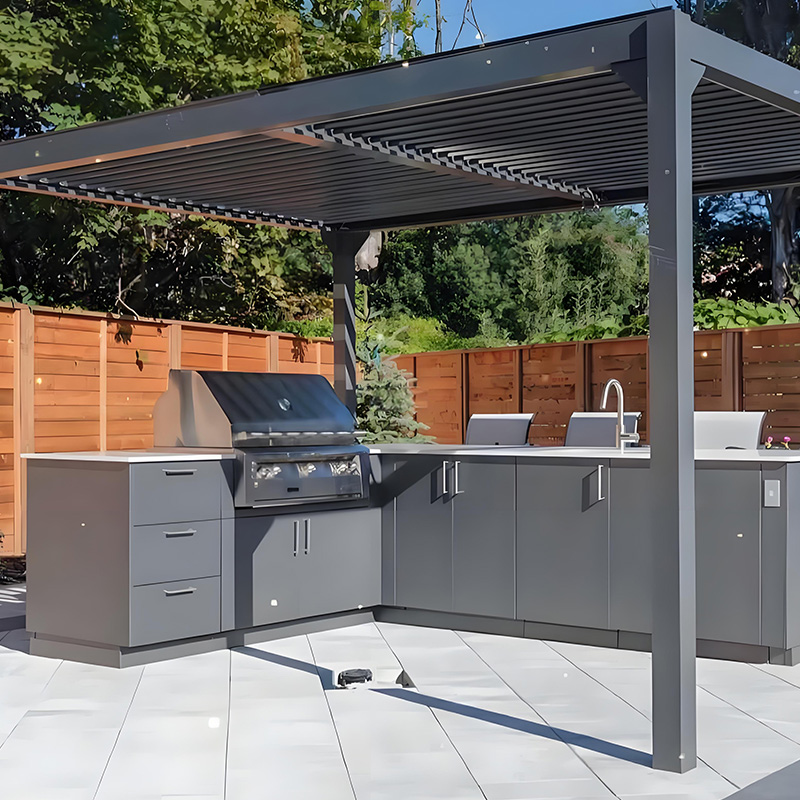
Creating the perfect outdoor kitchen starts with one crucial decision: selecting the right outdoor kitchen cabinets. Surprisingly, over 65% of outdoor kitchen renovations face cabinet-related issues within the first two years according to Outdoor Living Report (2024). Let’s explore how to avoid common pitfalls and create a stunning, functional space.
Many homeowners mistakenly use indoor cabinets outside. Big mistake! Indoor units simply can’t handle weather extremes. I’ve seen cabinets warp after just one rainy season. Outdoor kitchen cabinets need specialized materials. Think waterproofing, UV resistance, and structural durability.
| Material | Pros | Cons | Best For |
|---|---|---|---|
| Stainless Steel | Weatherproof, modern look, easy clean | Higher cost, shows fingerprints | Coastal climates, contemporary designs |
| Marine Polymer | No rusting, fade-resistant, lightweight | Limited color options | All-weather performance, low maintenance |
| Teak Wood | Natural beauty, durable | Requires annual sealing, expensive | Traditional outdoor settings |
Interestingly, marine polymer cabinets now dominate 42% of the premium market (Outdoor Cabinetry Trends, 2025).
Document your space dimensions meticulously. Account for grill cutouts, clearance zones, and traffic flow. Pro tip: Use painter’s tape to map layouts before ordering.
Humid areas need non-porous materials like polymer. Sunny locations require UV-resistant finishes. Our team’s 2025 Florida project proved powder-coated stainless steel outperformed others in hurricane season.
Prioritize storage needs. Do you need vertical tray storage? Dedicated trash pullouts? Integrated towel bars? Customize accordingly.
Choose marine-grade hinges and drawer slides. Standard hardware will corrode. Soft-close mechanisms are worth the upgrade.
Proper leveling and anchoring prevent 80% of outdoor cabinet failures. Never skip professional installation on premium units.
Warning: Never use MDF or particleboard outdoors! They absorb moisture like sponges. Also avoid:
Counterintuitively, mid-range polymer cabinets often outlast cheap stainless steel. Focus budget on critical components like drawer boxes. Splurge on work surfaces instead.
For premium stainless steel outdoor kitchen cabinets, consider trusted manufacturers like Weiting Outdoor Solutions known for commercial-grade durability.
✓ Verify level foundation
✓ Confirm waterproof backing
✓ Test all doors/drawers pre-installation
✓ Plan drainage slope under cabinets
✓ Schedule post-installation sealant check
A: Absolutely not. Their particleboard construction disintegrates when exposed to moisture. Always choose purpose-built outdoor kitchen cabinets.
A: Quality units need minimal upkeep. Wipe monthly with mild soap. Annually inspect seals and hardware. Surprisingly, marine polymer requires less maintenance than stainless steel.
A: Premium stainless steel or polymer cabinets last 15-20 years with proper care. Teak lasts 10-15 years but needs yearly oiling.